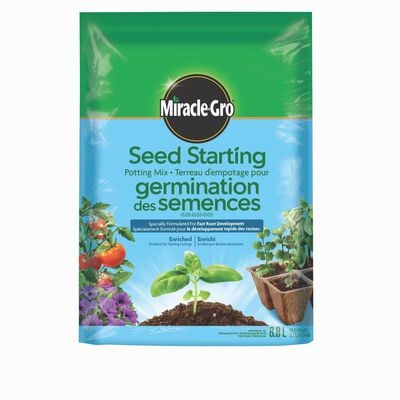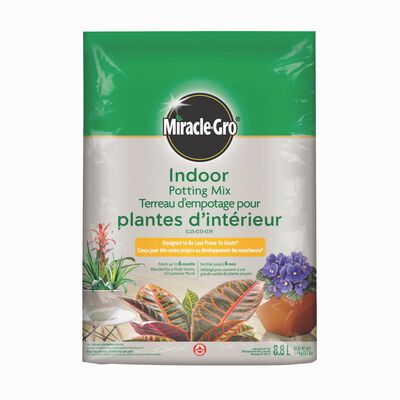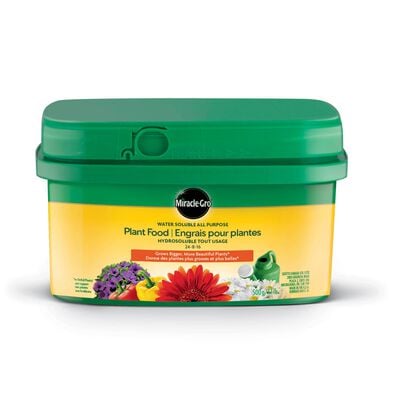
How to Grow Vegetables Indoors
Start with easy greens or dive into an adventure—there’s a veggie for every type of indoor gardener.
Growing an indoor vegetable garden can help keep your thumb green and your heart happy, even if your raised beds are covered in snow. Planting indoors does require some extra thought and patience—and an adventurous spirit—but it's totally doable. (Hint: It's especially easy if you opt for leafy greens.) So, why not give it a whirl?
Analyze Your Growing Space
Before you think about what to plant, consider where you'll put your indoor veggie garden. Varieties that grow best inside won't need a lot of space—they're similar in size to most houseplants—but adequate light, good air circulation, and a steady temperature are all must-haves.
- A sunny, south-facing window will provide the most direct and indirect natural light, but when battling shorter days you'll want to harness the power of a grow light, too. On average, most young vegetable plants grown indoors need 12 hours of light a day, and seedlings may need 14 hours or more.
- Quality air circulation helps encourage plant growth while keeping pests at bay, so place your veggie pots where they won't be crowded. You want them off the floor, away from curious kids or pets, on a sturdy table or a window sill with a saucer or tray underneath to protect any precious surfaces.
- A steady temperature may seem unrealistic in homes where some folks run hot and others are always freezing, but don't worry—everyone can coexist peacefully, plants included. Just set the thermostat between 60°F and 70°F, and make sure your indoor garden isn't next to any cold drafts or warm blasts.
Start with Easy Greens
To keep your success rate high and your crisper drawer full, start off with some of the easiest vegetables to grow. Mixed salad greens are a reliable, fast-growing crop for beginners. Or, try other cold-tolerant veggies with edible stems and leaves: Chives, spinach, kale, arugula, mustard, and loose-leaf lettuces all do well indoors. Looking for an even lighter commitment? Try fast-growing microgreens (more on growing those, below).
Once you've chosen your plant (or a few), decide if you're going to grow from seed or begin with young starter plants. In either case, you'll need pots that cater to your plants' future size. When it comes to containers, make sure it has a drainage hole and read the plant tag to determine the size and depth your mature plant—roots and all—will require. Pro tip: Plastic window boxes and 8-inch flowerpots are a good fit for a variety of veggies.
Start seeds in seedling trays, egg cartons, or small pots (like clean yogurt containers) loosely filled with Miracle-Gro® Seed Starting Potting Mix, which is formulated for fast root development. (Follow the seed packet instructions for how to plant.) Once your seedlings have grown a set of true leaves—the larger leaves that appear after the first, tiny set of smooth leaves—move them to containers filled with Miracle-Gro® Indoor Potting Mix. This lightweight soil drains well and contains nutrient-rich compost, so use this for any starter plants you pot up, too.
If you want to skip the soil altogether, you can also grow many veggies in water using a hydroponic garden. Space-saving systems are designed for easy home use, and come in a range of sizes with built-in grow lights.
Watch, Water, And Feed Your Indoor Garden
Once you've finished planting, care for your indoor vegetable garden the same way you would one outdoors, minus the wide-brimmed hat (unless that's your thing). Check in on your plants daily to monitor their progress. Water them regularly to keep the soil moist, but not wet. After the first month, replenish lost soil nutrients by adding Miracle-Gro® Water Soluble All Purpose Plant Food to your watering can, according to the package instructions. Continue to feed your plants weekly. They get hungry, too!
With proper care and a little luck, you can go from planting seeds to harvesting baby greens in about 3 to 4 weeks, and more mature greens in about 4 to 6 weeks. Lost track of time? Greens are ready to snip once the leaves are at least 4 inches long. Harvest the outer leaves first, about 1 inch above the soil, and let the inner parts of the plant continue to grow.
Troubleshoot As Your Veggie Garden Grows
Most indoor growing problems stem from light—usually too little, but sometimes, too much. It can be difficult to provide adequate indoor light with sunlight alone, so expect some trial and error on the way to getting things just right with the addition of grow lights. To top it off, there's always the chance of pests. Here are a few common problems and ways to course-correct if you notice something's up.
- Pale and leggy. These plants need more light. Move your plant to a sunnier location or closer to an LED grow light (6 to 12 inches is ideal). Turn your plants regularly so they don't lean toward their light source.
- Brown-edged or crispy. If the leaves are looking a little fried, it could be from too much direct light or too much heat. Move plants to a cooler location with indirect light, or add some distance between your grow light and the top leaves. Also, consider your watering routine: Brown or crispy leaves can also stem from keeping plants too dry or too wet.
- Covered in pests. If indoor pests like aphids or whiteflies appear, remove them by gently rinsing the entire plant—the fronts and backs of leaves, and the stem—with cool water, in the sink or even the shower. Separate the affected plant from any others until you're sure the insects are gone. If the problem persists, spray your plant with an insecticidal soap, following the label directions.
For Instant Gratification, Grow Microgreens Indoors
Microgreens—the tasty, immature greens often served in sandwiches and on top of salads—are the perfect crop for impatient indoor gardeners. Some can be harvested in as few as 10 days.
- To grow microgreens, poke drainage holes in a shallow container, like a disposable pie plate or plastic take-out dish, then fill it with an inch of Miracle-Gro® Seed Starting Potting Mix.
- Moisten thoroughly and gently flatten the potting mix with your hand before scattering veggie seeds—like salad greens, broccoli, mustard, cabbage, or a microgreen seed blend—in an even layer on top.
- Add just enough potting mix to cover the seeds, then pat the soil down, mist it with water, and cover with plastic wrap.
- When sprouts appear, remove the covering and move the container to a sunny windowsill.
- Water daily until your microgreens have a set of true leaves and have grown 2 or 3 inches tall. Then, cut the stems just above the soil with clean, sharp kitchen scissors, or pinch them off with your fingers.
Dare to Grow Fruiting Or Root Vegetables
Daredevil gardeners looking for indoor excitement can try to grow fruiting or root veggies. The keyword here being "try"—even with a grow light, veggies like tomatoes and peppers will grow more slowly and produce fewer, smaller fruit than plants grown in-season and outdoors. But, trying is part of the fun, so here's how to set yourself up for the best chance at success.
First, know that a grow light is an absolute must for these sun-loving, high-energy plants. Depending upon how much natural light you have, you may need to keep it turned on for 14 to 20 hours a day.
When it comes to fruiting veggies, keep it compact with varieties like snacking peppers and dwarf tomato plants. If you've got your heart set on growing a root crop indoors, consider starting with spring radishes since they're the easiest. Plant rooting veggies in deeper containers, but with both types—roots or fruiting—keep your grow light about 6 to 12 inches from greenery, feed regularly, and try not to overwater.
Your chances of success may be better if you grow fruiting types of veggies hydroponically, which can produce a higher yield in a smaller space. Chili peppers and dwarf or mini varieties of tomatoes and other peppers are all options. Root veggies, like radishes and carrots, aren't well-suited to home hydroponics—they really need nutrient-packed soil to help them establish and develop their edible roots.
Planting indoors means you'll have fresh produce to put on the table without having to put on a jacket or outsmart a hungry rabbit to get it. That said, once your indoor veggie garden is going strong, you may notice a few sneaky snackers of the human kind. Getting the family to eat more veggies? Now that's success!


